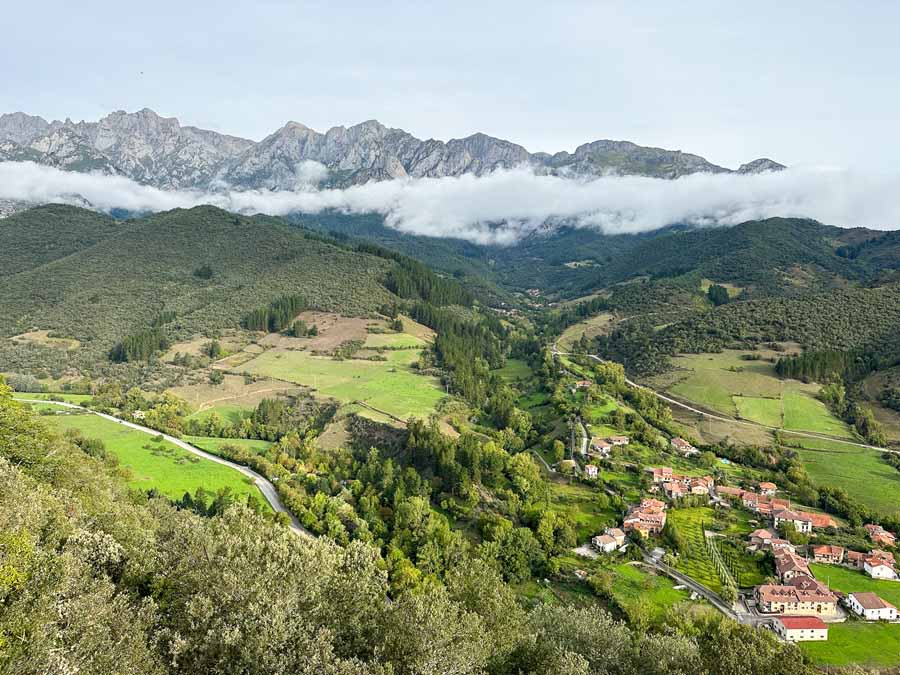La Lebaniega Certificate

Across the main plaza of the monastery is a small Pilgrim Welcome Center. This is where you pick up the Lebaniega Certificate, the certificate for completing the Camino Lebaniego.
The suggested donation for the certificate is 1€ and another 1€ for the protective tube. This is a must if you are continuing onto another Camino route.
Pilgrim Welcome Center at Monasterio de Santo Toribio | Hours: 10:00 – 14:00 / 15:00 – 18:30
Ruta of the Hermitages

After exploring the monastery and grabbing your certificate there is a chance to walk to different chapels and hermitages found along the grounds. They are all mapped out on a poster board near the Pilgrim Welcome Center.
There is no loop per say to visit all the Hermitages, but the map shows the best way to include a visit to each one.
Perhaps the most striking one is Ermita de San Miguel, which also offers a spectacular viewpoint of the Camaleño Valley nearby. I also took the scenic walk to Ermita de Cueva Santa which was said to be Saint Toribio’s retreat. It’s the oldest hermitage on the grounds.
Albergue de Santo Toribio
There is an Albergue next to the monastery that is currently closed. It seems that it is only opened during the busy months on years of the Jubilee.
What to See in Potes Spain

After exploring the Monasterio de Santo Toribio, head back into Potes. There are plenty of things to see in Potes.
Those with the Lebaniego Credencial can visit the iconic Torre del Infantado for free. This tower belonged to the Duke and Duchess of Infantado and today houses the “Beatus of Liébana and his Beatos” Museum. During the middle of the 8th century, Beato was a monk who wrote the “Commentary on the Apocalypse” that went into depths examining the Book of Revelations. In the museum there are also temporary exhibits and a highlight is visiting the viewpoint at the top of the tower.
Do take time to wander the cobblestone streets of Potes. There are lots of nooks and crannies leading to old neighborhoods that look like they haven’t changed over centuries. There are small bridges that cross over the Quiviesa and Deva Rivers and offer up spectacular viewpoints. The whole historical Old Town is a delight to explore.
If you wish to walk even more, the river walk next to Río Quiviesa and the Rio Deva offers a tranquil escape right in the heart of the pueblo.
From all the walking, due delve deep into the regional cuisine. The Picos de Europa region in general is known for hearty stews, unique cheeses, and meats. While Cider (Sidra) is most popular in the Asturias region of the Picos, you will find a few Cider Houses (Siderías) in Potes.

